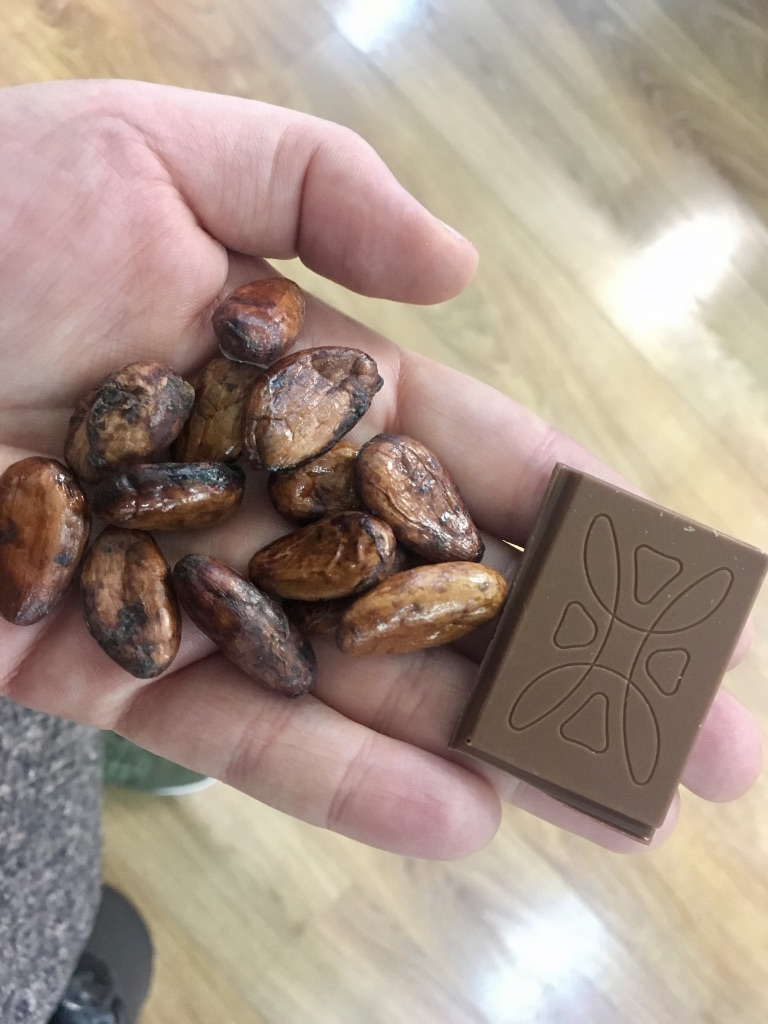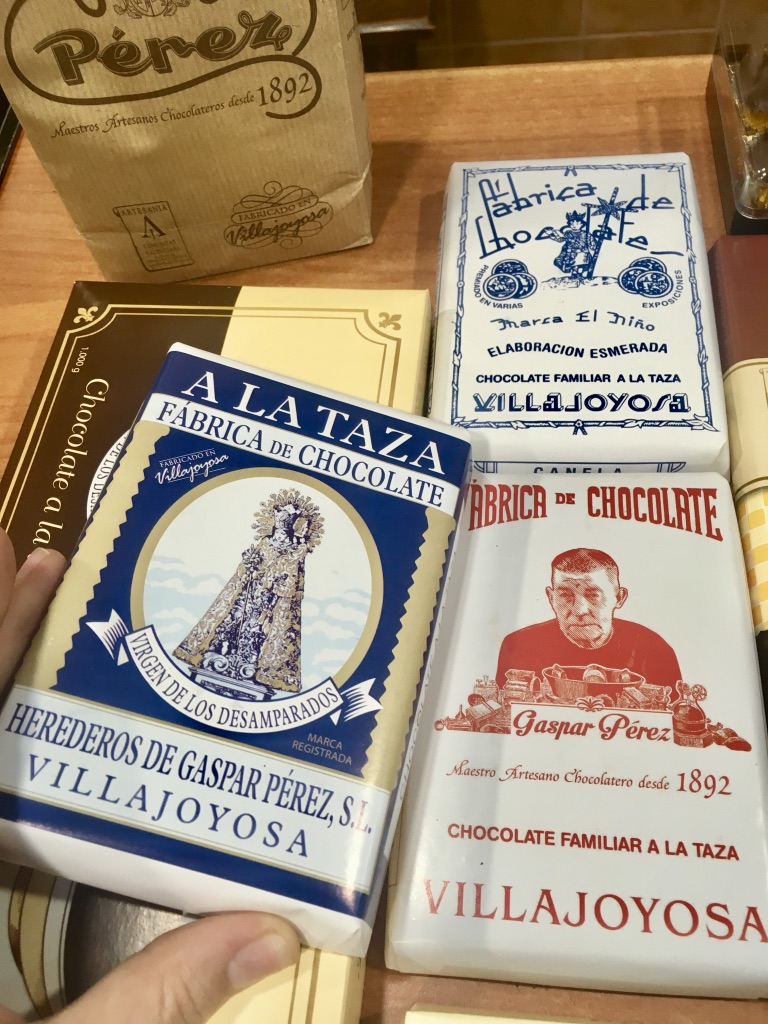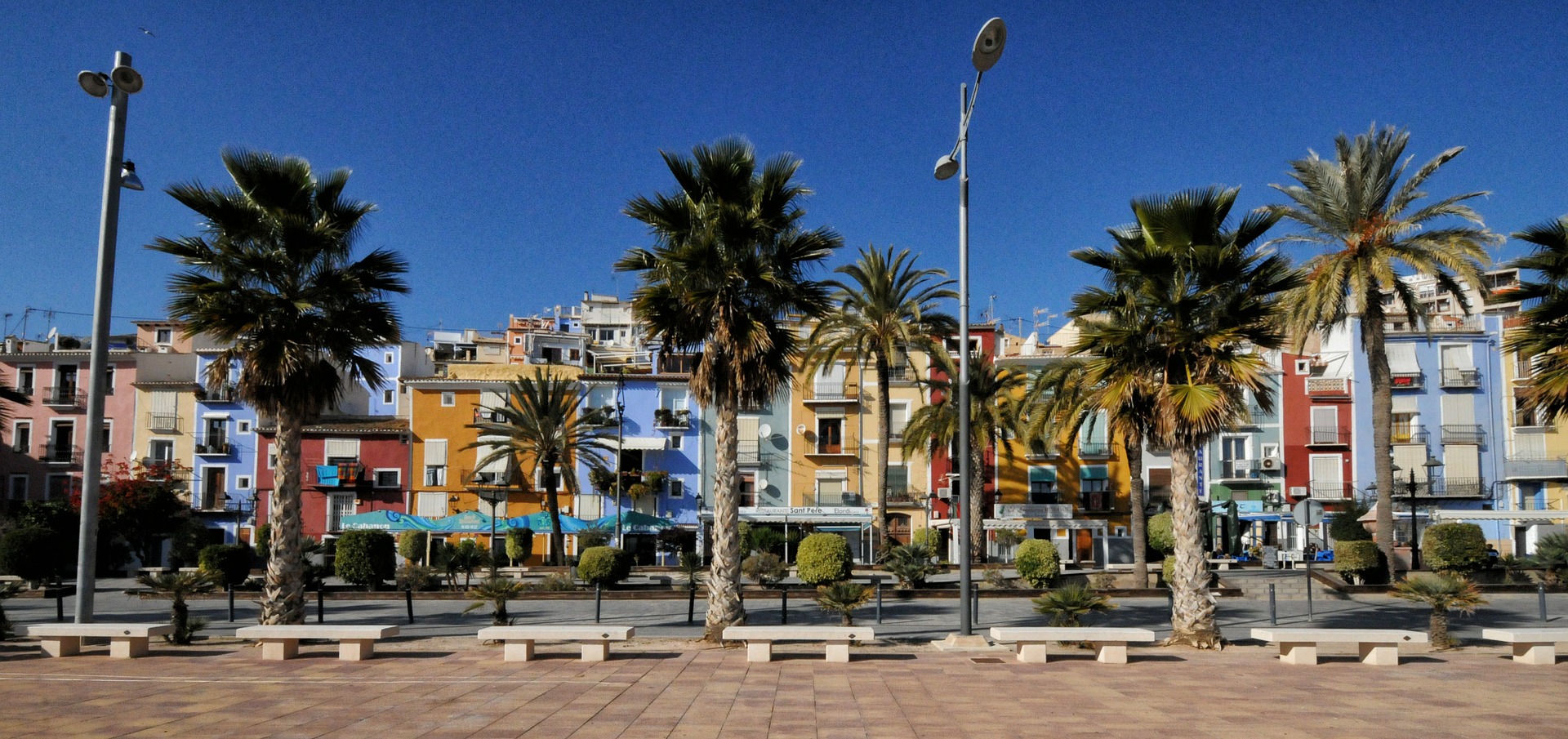Anna Karla Almeida, Brazilian Architect Urbanist, industry historian, Doctoral Assistant at EPFL, Switzerland
The cacao plant was known as the tree of paradise from which the drink of the gods was extracted. The fruit of the cocoa of the Americas, sacred drink of so many peoples, was the inspiration for the creation of chocolate that today is appreciated as an industrialized product worldwide.
Crossing the sea, from the cocoas of America to the old continent, my proposal today is to discover the city of Villajoyosa, Spain. The historian Payá Nicolau stated that it was through an Italian that the culture of chocolate manufacture arrived in Villajoyosa, in 1810. According to the municipal census of the region, in 1810 the first handmade chocolate producer was registered. Thirty years later, in 1840 the first chocolate industry was officially registered in Villajoyosa. One of the most famous chocolatiers in Spain is located in Villajoyosa – the Valor chocolates, which are recognized in the country for their quality and also as a chocolate symbol of a country.

I had the great surprise of finding other industries in the same city: Clavilleño Chocolates, Perez Chocolates, and Marcos Tonda chocolates. In the Clavilleño Factory, they created a room dedicated to exhibiting some artifacts, iconographies ad machines linked to the chocolate manufacturing, pieces of industrial archaeology between Spain and the cocoa plantations in Central America and Africa.


Family production & technical innovation
When we think about the memory of industries such as the chocolate industry, we also think about industries related to family production. In the case of Villajoyosa, it is interesting to verify the growth of the city from the small core of chocolate production in the family. The whole family participated in the production process. From different aspects, there was a growth in production and its consequent technical improvement. New patents were launched and new machines were produced mainly in Valencia and in Barcelona were bought by Vilajoyosa’s industrialists to increase production.
In the first moment, the process of extracting cocoa paste required great physical effort. For the first manifestations of extraction of cocoa paste for the production of chocolate, this type of pylon has used that smash the grains until they formed a paste, used as the main raw material.

As a technological innovation, the machine was later created with three metallic cylinders that made the same process more quickly and with more quality. The production of Villajoyosa chocolate in two moments. Initially, wooden moulds had been used to shaped the chocolate bars. With the market demands and new small “candy” formats, the wooden molds were replaced by plastic moulds.


The assembly line production was a breakthrough in the industrialization of Villajoyosa. With it, industries could produce in large quantities could continuously produce for many hours, without the need for great human intervention in each stage of the process.

Memory & History
If we think about the memory and the history of this entire production cycle, we can affirm that we have different approaches to memory.
Olfactory memory
When I was in Villajoyosa, Mr. Perez told me that “many of the people who live in Villajoyosa relate the smell of chocolate emanated by the chocolate factories”. Indeed, I was taken to the city also to feel that olfactive experience. Besides being a memory of the city, it is a brand for those who visit it.
Memory collected in the company archives


Many of the materials related to production come not only from the oral memory of producers, inhabitants, and consumers. The company files are key pieces to discover the operation of the factories, the type of hierarchy used and also where the products used in the manufacture of the Villajoyosa chocolate came from.
Industrial Archeology

Some of the machines that were primordial for the production of chocolate came from Valencia and Barcelona, which at that time covered a production cycle using machines made only in Spain.
In a nutshell, through a history of machinery, the improvement of chocolate manufacturing processes through the ages is demonstrated and we have the possibility to understand the tradition of Spanish chocolate manufacturing, as well as signs of economic growth of a region.
The industrial, material and immaterial heritage of the city of Villajoyosa is undoubtedly a potential driving force to further development of tourism experiences near the Alicante and Valencia regions. The chocolate route is one of the industrial routes proposed by ERIH (European Routes of Industrial Heritage) and a great idea to enjoy the taste, the perfume and the history of industrial production known nationally.
XXXXXXXXXXXXXXXXX